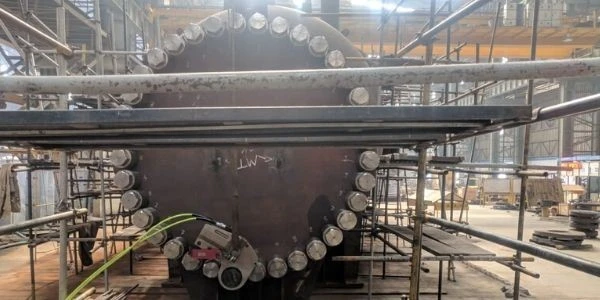Flanges are one of the crucial applications in major industries like oil and gas, petrochemicals, ports, subsea, etc. As flanges carry both non-flammable and flammable gases and liquids, scheduled checks are necessary to avoid leakages and maintain joint-integrity. Post every bolting and machining maintenance job, the flanges are pressure tested at high pressures to ensure safety and accuracy of the job. To ensure this, our article will talk about the factors that need to be considered to ensure accurate controlled bolting on flanges.
To achieve joint-integrity, analyzing the flange specifications, choosing the right torque wrench for the job. The right torque wrench eliminates the possibility of over-torqueing and under-torqueing which can lead to leakages. However, choosing the right torque wrench for controlled bolting requires certain factors to be considered which can only be provided by an experienced engineer. Also, the operator needs to be experienced or trained in operating the tool to ensure his safety and to complete the job in time without damaging the flange. Understanding the importance of experience in controlled bolting, following are some of the factors that need to be taken into consideration.
Torque Loss caused by torque wrench
Every bolting job through a torque wrench causes torque loss. The torque loss is generated while tightening the bolt. The loss generated via tightening is a combination of vibration of the system, bolt relaxation, thermal expansion, gasket creep, and elastic interaction. Exceeding torque losses leads the flange to blow out or the internal pressure to exceed the force holding the gasket in place causing a leakage. Gasket thickness is another factor contributing towards leakages which can be avoided by adding a 1.6mm thick gasket on a standard ASME flange.
Instances like this can be avoided by installing the gasket accurately i.e. by slowly bringing the flanges together and parallel during installation. Also, the right bolt tightening sequence needs to be followed by taking at least four bolt tightening passes which can increase job safety and reduce future maintenance costs.
What are the four bolt tightening passes and the sequence?
A four-bolt flange tightening is done using a criss-cross pattern that can be determined as per the image below.
In the first pass, mildly tighten the first bolt and then move 180 degree towards the second bolt, followed by 90 degrees on the third and finally directly across the fourth. Continue this sequence till all the bolts are tightened by the torque wrench.
Post understanding the sequence, lubricating the bolt also acts as a crucial step to reduce friction during tightening. It not only increases the longevity of the bolt but also reduce bolt failure rate during installation. Preload is also caused due to high friction as it leads to low torque. Therefore, it is recommended to lubricate both male threads and nut bearing surface.
Steps to ensure while preparing a flange for bolting
With the most common cause of leakage being inaccurate bolting, following is the checklist ensure accurate and safe bolting.
⦁ Ensure that the flange faces are clean, scar and defect free.
⦁ Inspect for any corroded threads or damaged fasteners. Replace them if required.
⦁ Ensure the threads of the bolts are lubricated and the surface of the nut adjacent to the washer or flange.
⦁ Ensure the gaskets are centrally placed.
⦁ Check the flange alignment according to ASME B31.3 process piping.
⦁ Adjust the position of the nut to ensure that at least two threads are visible placed above the top of the nut.
The checklist assures that a bolting expert is required to inspect, analyze, understand, and then use the right torque wrench to achieve joint-integrity among flanges. If you are looking for experienced controlled bolting service, ABS has more than two decades of experience in resolving complex flange maintenance jobs. Visit us next time for more knowledge sharing articles.


